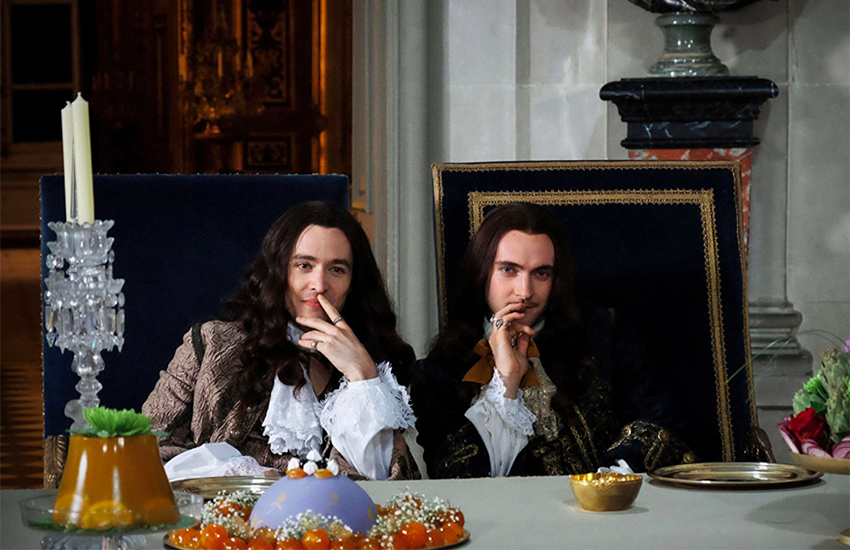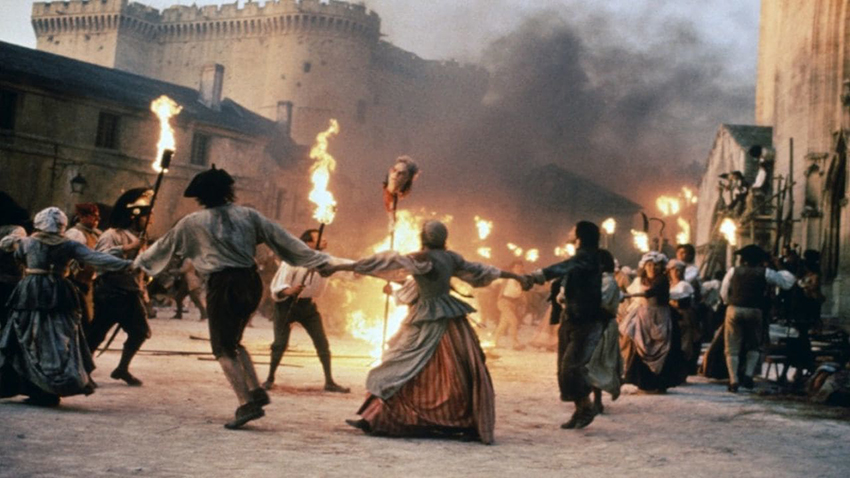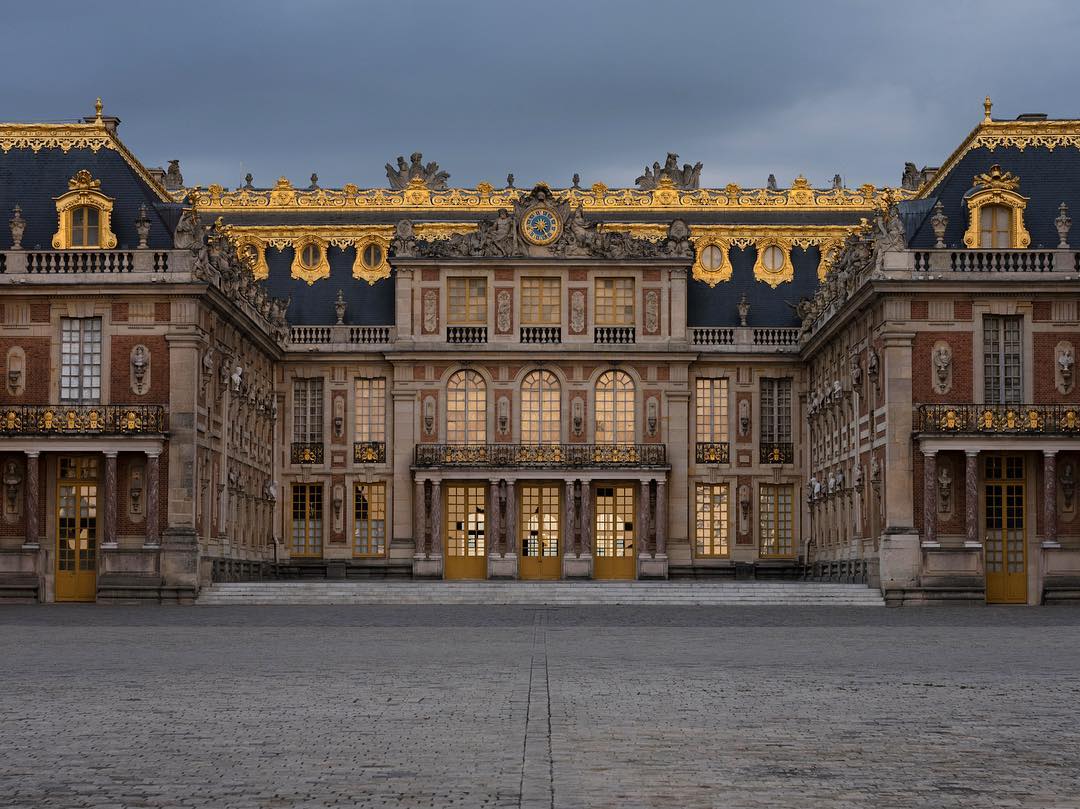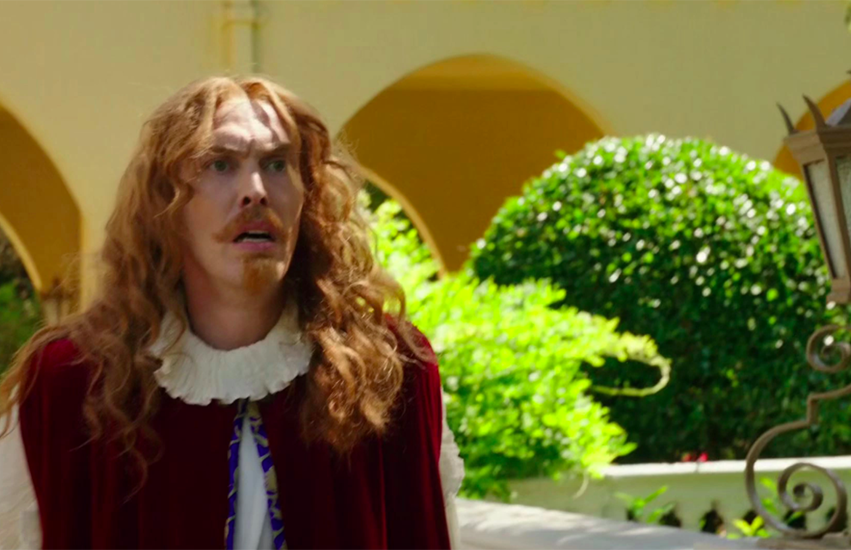Homosexuality and lesbianism is woven into the history of the Palace of Versailles and into the lives of its most famous residents.
The magnificent palace on the outskirts of Paris is a camp baroque masterpiece that defined elite tastes for a hundred years and still influences them today.
But look a little closer, and you will see homosexual history hidden in plain sight in its art and artefacts.
The falcon loving founder, Louis XIII
Louis XIII became king of France at just nine years old. And from his teenage years he preferred the company of male courtiers to women.
Charles d’Albert, the young Duke of Luyens, was his particular favorite. While it’s not certain the two had a sexual relationship, it is widely rumored.
We do know they shared another passion – hunting. Among the titles Louis granted Charles was Grand Falconer of France. Caring for the king’s hunting birds was a great honor.
Luyens died of a fever while fighting Protestants in 1621.
But the king kept hunting. And in 1624, that was to change the shape of a small village 20kms southwest of Paris – Versailles.
Louis, then in his early 20s, decided to build his hunting lodge there.
In Louis son’s reign, Versailles was to evolve from hunting lodge to palace. But falconry was never forgotten there. The palace’s world famous Hall of Mirrors would host an annual ceremony when the king would receive his new falcons.
Louis started another fashion in 1624, donning a wig. By doing so, he set the style of European men wearing wigs for the best part of two centuries.
Was Louis’ marriage loveless?
The king had married Anne of Austria, daughter of Philip III of Spain, aged just 14. Politics, not love, dictated the match, which cemented the political and military alliance between the Catholic countries of France and Spain.
Some claim the king and queen enjoyed a few years of marital happiness. But Louis was soon busy with his male courtiers again.
It took 23 years of marriage, and sadly four stillbirths, before the pair had a son and heir.
Meanwhile, Louis didn’t follow the usual kingly fashion by having a mistress. That was so unusual that he earned the nickname ‘Louis the Chaste’.
Louis XIII in the DC film, Legends of Tomorrow. | Photo: DC
‘A hundred filthy acts’
Despite his chastity, the king started another relationship with François de Baradas. He was a handsome and athletic officer in Louis’ household.
A contemporary writer said Louis ‘loved Baradas violently’. He added that the king committed ‘a hundred filthy acts with him’.
The relationship sparked an explicit poem too, including the lines: ‘Become a bugger, Baradas / if you are not already one.’
But it was short lived. Baradas couldn’t be faithful and apparently slept with other nobles while he was on a visit to Nantes. The king moved on.
Next in line was a more sensible young man, Saint-Simon. He stayed in the king’s favor for a decade and ended up a duke. But he became too close to the enemies of Cardinal Richelieu, the virtual co-ruler of France, who had him banished.
Then there was the good-looking and stylish Henri Coiffier de Ruzé, the Marquis of Cinq-Mars.
Louis was obsessed with him but the two regularly argued, causing him much unhappiness. The king event complained to Cardinal Richelieu that the fights were making him have sleepless nights.
Various reports reveal details of Louis and Henri’s love life.
One says a friend walked in on Cinq-Mars while he was rubbing his body with jasmine oil one day. A moment later there was a knock on the door, and the king came into the room. Obviously, Cinq-Mars had been preparing for him.
Another incident happened when they were travelling together. Louis sent Cinq-Mars to undress. But he returned, ‘adorned like a bride’. Louis said ‘to bed, to bed’ and his lover wasn’t between the sheets before he was kissing his hands.
The ulcerated king’s early and painful death
Louis suffered from ulcerated intestines, tuberculosis and generally weak health and died aged 41.
He left France much more firmly under the rule of the king rather than the nobles. And that was something his son and heir Louis XIV was to capitalise on.
But it was his other son, Philippe I, Duke of Orléans, who was to be the next great LGBTI figure in the French court.
Versailles, the gilded cage
The next king, Louis XIV created a new vision of monarchy, with Versailles at its heart.
He poured a fortune into large scale expansion of Versailles, swamping his father’s hunting lodge. What is more, he positioned himself as the Sun King. Even today, symbols of him depicted as the sun, with light shining from him, can be seen throughout Versailles.
And he put the palace to a new use. Louis XIV ordered his troublesome nobles to spend a large amount of time there. It took them away from their own lands and personal power base.
Although ambitious nobles gained from having better access to the king, it wasn’t all luxury. The palace became so crowded that some had to make do with just a few small rooms.
Louis’ brother, Philippe, was at the center of life in this gilded cage.
Philippe, the ‘prettiest child in the world’
The king’s brother had been noted as intelligent and attractive from childhood. One duchess called him the ‘prettiest child in the world’.
He was also unashamedly effeminate.
His mother, Queen Anne, called him ‘my little girl’ and encouraged him to dress in feminine clothing.
Philippe adopted this as his style and in adulthood would attend balls and parties in female clothes, for example as a shepherdess.
Some claim his brother the king was irritated by his flamboyance and openly disliked his overt sexuality. If so, he did little about it.
Perhaps his real attitude was more accepting. Louis’ second wife Madame Maintenon once complained to him about the rampant homosexuality at the court. She warned him that if he did not stamp it out, God would punish France.
Louix XIV gave her a sour smile and replied with the perfect put-down: ‘Should I start with my own brother?’
In fact, it could have helped Louis XIV. If Philippe didn’t particularly want to marry and have children, he was less of a threat to the king’s own dynastic plans.

Philippe I and Louis XIV in the TV series Versailles. | Photo: Versailles
How a cardinal fixed up Philippe’s first gay lover
Philippe was around 18 when he found his first young lover. Philippe Jules Mancini, the Duke of Nevers, was the son of Cardinal Mazarin, King Louis’ chief minister. He was around Philippe’s age.
In some accounts, Mazarin even encouraged Mancini to sleep with Philippe – believing a homosexual prince was less of a threat to the king.
The Catholic Church may technically disapprove of homosexuality, but not when they can use it to exercise power and influence.
The dashing Chevalier, the love of Philippe’s life

The Chevalier, from the TV series Versailles. | Photo: Versailles
In that same year, 1658, Philippe met the man who was to be love of his life.
He was yet another young man called Philippe and came from a noble family. His title was the Chevalier de Lorraine. He was just three years older than the prince.
Historian Dirk Van der Cruysse tells us that by the end of the 1650s, the Chevalier had ‘hooked Monsieur [Prince Philippe] like a harpooned whale’.
King Louis may have been prepared to turn a blind eye to his brother Philippe’s homosexual relationships. But he still needed him to marry. And Philippe did that twice in his life. Both his wives became embittered enemies of the Chevalier.
It’s not hard to see why. Philippe told his first wife that he couldn’t make love to her without the Chevalier’s permission. Henriette Anne tried to get her own back. In January 1670, she persuaded King Louis to imprison the Chevalier. He was jailed in Lyon, then in the Mediterranean island fortress of Château d’If. Then he was banished to Rome.
But all this was short-lived. By February Philippe had persuaded his brother to allow his lover to return to Versailles.
Philippe’s second wife didn’t go that far, but was no friend to the Chevalier. Reportedly she merely ‘tolerated his existence’.
Meet the bisexual playboy who loved both the prince and princess
Another of Philippe’s lovers had a very different approach to the Prince’s wife. Step forward the bisexual Armand de Gramont, the Count of Guiche. He was vein, overbearing and looked down on everyone. But he was also reputedly the hottest guy at Versailles.
And that was enough reason for his lovers to look past his faults. These lovers reportedly included both Prince Philippe and his first wife Henrietta.
But Armand overreached when he flirted with Louis XIV’s own mistress, Louise de La Vallière.
His downfall came when he conspired with Henrietta to drive a wedge between Louis and Louise. The king banished him.
This wasn’t quite the end of his story, however.
In exile, Armand became a sword for hire, fighting the Turks for the Poles and the English for the Dutch. Eventually he returned to France and joined Louis XIV’s army in the Franco-Dutch War. And he proved himself a hero when swam across the Rhine, encouraging the whole army to follow him.
Military heroes
This incident highlights that the gay and bi men at court were often brave soldiers. Many homophobes and historians have tried to paint them as effete, limpwristed and cowardly. In fact, the opposite was the case.
Likewise Prince Philippe himself was a born soldier. In fact, contemporaries heralded him as a skilful military strategist. This annoyed his brother, the king, who was less competent on the battlefield.
Philippe’s lovers were obviously interested in military careers too. We know this partly because his second wife, Elizabeth-Charlotte, complained he lavished military promotions on them.
She said: ‘Monsieur is still the same as he was in his youth. This very winter he purchased 200,000 guilders’ worth of charges in the regiment of the guards with which to reward some young fellows who have entertained him in not exactly an honorable fashion.’
Philippe admittedly loved pleasure and finery. He drenched himself in scent, wore ribbons and jewelled bracelets, painted his face and even danced at balls in dresses. But that didn’t stop him being ‘masc’ at war.
Gays murdered by the church and state
Sadly, none of this meant gay people were accepted by society.
Of course, the word ‘gay’ was not used then. Even the word ‘homosexual’ wouldn’t exist until 1860s, about 200 years later. In the bigoted language of the time, the French called homosexuality ‘The Italian Vice’. Incidentally, the Italians got their own back by calling it ‘The French Disease’.
So, in a modern sense, Philippe was a gay hero. His position gave him license to be himself. But by doing that, he provided a human shield to other gay and bi men who grouped themselves around him.
For others outside his protection, the law was cruel and the Catholic persecution of homosexuals lacked any Christian compassion.

Leonardo DiCaprio plays Louis XIV in Man in the Iron Mask. | Photo: Man in the Iron Mask
In fact, Louis XIV allowed the laws to become harsher under his reign. Gay and bi men were burnt to death at the stake in France.
And the king himself reacted brutally when his own son got caught up in the next gay scandal at Versailles.
A secret gay society
The teenage Louis, Count of Vermandois, was the son of Louis XIV and his mistress, Louise de La Vallière. This is the same mistress who had enjoyed an affair with the bisexual soldier, Armand de Gramont.
And another figure returns to the stage at this point too – the Chevalier de Lorraine, the love of Prince Philippe’s life.
The Chevalier allegedly lured the young Count of Vermandois into a brotherhood dedicated to the Italian Vice – homosexuality.
They called themselves ‘brothers’ of a ‘holy fraternity’ and ranked themselves as ‘grand priors’ and ‘novices’.
The Count of Bussy-Rabutin reveals that they signed up to a constitution forbidding sex with women.
He adds: ‘If any of the brothers are married, they are obliged to declare that it was for the good of his affairs, or because his parents had obligated them, or because it was necessary to gain an inheritance.
‘That he would swear at the same time to never love his wife, and to only sleep with her until there is a son, and however he must ask permission, which will only be granted for one day of the week.’
Apparently the ‘brothers’ enthusiastically embraced these rules.
But the Sun King Louis XIV was angry when he learned about the brotherhood. He had turned a blind eye to his own brother’s sex life. However the inclusion of his illegitimate son, the young Louis, and his cousin, the Prince of Conti, tipped him over the edge this time.
Beating, exile and death for the teen count
When the brotherhood was discovered in 1682, Louis XIV insisted that he would watch as Vermandois was beaten in punishment. He then ordered that the young Louis should marry as quickly as possible. And the king punished The Chevalier by sending him into exile again.
Vermandois ended up fighting for France in Flanders. Like so many other gay men, he proved he was no coward. In fact he insisted on continuing to fight, despite his doctor warning he was gravely ill. As a result, he died in 1683, aged just 16.
A garden gay orgy under the windows of the young king
When Louis XIV himself died in 1715, his son, yet another Louis, was only five years old. So, while the boy became King Louis XV, he needed a regent to rule for him.
The regent was Philippe II, Duke of Orleans. He was the son of the Philippe of Orleans who had been the great queer figure at Versailles during the last reign.
There were rumors that multiple groups of nobles set up ‘fraternities’ of people having gay sex during this regency.
In the most famous example came on an April night in 1722. A group of 17 young noblemen met in the gardens of the Tuileries Palace in Paris. And apparently they had sex under the windows of the apartments of the 12-year-old King Louis XV.
A royal cruising ground
The Parisian police already knew the Tuileries Gardens were a hotbed of gay sex. Today, we may call it a cruising ground. So it’s likely they chose the location of the orgy deliberately. And it’s likely that’s what got them caught.
The Duke of Richelieu, who wrote about the incident, certainly believed it wasn’t a one-off. He either knew or suspected the men were part of a gay ‘fraternity’ or ‘confrérie’ which met regularly.
Philippe II, must have been aware of his father’s sexuality and seemed relaxed about the idea of young men having sex. But he didn’t like that they were in a ‘brotherhood’ which could lead to conspiracies.
Richelieu says France’s leaders held an emergency meeting to discuss what to do about the orgy.
He records: ‘The Regent, who did not stop smiling, was satisfied that it was necessary to give the nobles a harsh reprimand and tell them that they do not have the best taste in the world. Yet, when it was said that these gentlemen had formed a confrérie, he called for their dissolution.’
The Marquis de Rambures was apparently the ringleader, and the regent jailed him in the Bastille, France’s most notorious prison. He banished many of the others from court.
Marie Antoinette

The queen in a scene from the 2006 film, Marie Antoinette. | Photo: Marie Antoinette
Without doubt, the most famous resident of Versailles at this time was Marie Antoinette, queen to Louis XVI.
She came to Versailles from Austria at the age of just 14. And she brought her favourite pastries from Vienna – croissants – which became very popular.
She brought a taste for fashion too. At the time, France was suffering a financial crisis and the population was rioting because they couldn’t afford the high price of flour and bread. But Marie Antoinette spent lavishly on fashion. Her stylists created the three-foot tall powdered wigs which Versailles became famous for.
Historians now say she never uttered the lines ‘let them eat cake’ on hearing that the French people couldn’t afford bread. But anger over her spending and allegations that she supported France’s enemies, particularly Austria, helped fuel the French Revolution.
Marie Antoinette’s lovers and how one ended up on a pike
It was against that backdrop that her enemies started spreading rumours about her ‘sexual deviance’. Campaigners published pamphlets claiming she was a lesbian. Lesbianism was called the ‘German Vice’ so, her Austrian childhood made her a natural target for this accusation.
In fact, she had four children with Louis XVI. And they accused her of having affairs with men too, including the king’s brother. So really the pamphlets should have proclaimed her to be bisexual.
Of her female favorites and likely lovers, the most famous are the Princesse de Lamballe and the Comtesse de Polignac.
She called the Comtesse her ‘friend after my own heart’ and lavished gifts on her. Unsurprisingly, this made her yet more unpopular.
It all ended in a particularly grisly way for the Princesse de Lamballe after the French Revolution came in 1789.

A 1989 depiction of the French Revolution. | Photo: La Revolution Francaise
In August 1792, the revolutionaries arrested the royal family and sent them to Temple Prison. But they separated off Lamballe and sent her to another jail.
When the September Massacres broke out, mobs killed thousands of people and the streets ran with blood.
They ordered Lamballe to renounce her loyalty to the king and queen. When she refused, they bludgeoned and stabbed her to death. Some accounts claim they also raped her and mutilated her body.
The mob cut off her head and put it on a pike. They then carried it to Temple Prison demanding the queen ‘kiss the lips of her intimate’. They didn’t get near Marie Antoinette but did wave the head in front of her window.
Of course, Marie Antoinette lost her own head at the guillotine about a year later in October 1793. Madam Tussaud, now world famous for the wax work museums, made a death mask of it.
What Madonna owes to the queen
Marie Antoinette left her legacy on Versailles with an unusual addition in the palace grounds.
The Queen’s Hamlet is a rustic, mock village, created in 1783, as a place for her to relax with her closest friends. It comes complete with a farmhouse, dairy, dovecote and a mill, all surrounded by quaint cottage gardens.
Here Marie Antoinette would dress as a shepherdess and play the peasant, while France’s real peasants were starving. She would even milk the cows and sheep, which had been carefully washed by servants in advance.
It was all built, at vast cost, in the grounds of the Petit Trianon, her mini palace on the Versailles Estate.
She is remembered also as a symbol of sexual liberation.
One example is Radclyffe Hall’s The Well of Loneliness, published in 1928 and one of the most important works in lesbian literature. It contains repeated references to Marie Antoinette, including a visit to her Petit Trianon.
Madonna was also inspired by the queen when she created her performance of Vogue at the 1990 MTV Music Awards. She dressed the stage and dancers in the style of Versailles in the 18th century and depicted herself as Marie Antoinette. She was clearly fascinated by the French queen’s sexuality, love of fashion and taste for excess.
Versailles today
With the royal executions during the revolution, the glory days of Versailles came to an end. The palace fell into disrepair and the furniture was sold.
Decades later Napoleon did some restoration work. And when the monarchy was restored and Louis-Philippe came to the throne, he created a museum to the glory of France in the palace. His enormous Hall of Battles is still a highlight of a visit to Versailles, full of paintings of France’s greatest victories.
Versailles had another moment at the center of world history, when it hosted the peace summit at the end of the First World War. The Treaty of Versailles in 1919 set the political landscape of Europe for decades and ultimately helped trigger the next World War.
Today, the palace and it’s vast gardens are one of the highlights of a trip to France and worth putting on anyone’s bucket list.
As you tour the royal corridors, you’ll see many of the queer cast of characters from French royal history. You’ll also see plenty of homoerotic and gay references in the art. For example, Alexander the Great, whose sexuality the kings certainly would have known, is a repeated figure.
And you can get some sense of the glories of this royal home, the vast wealth it took to create it and the febrile environment it fostered.

The grand entrance to the palace. | Photo: Chateau de Versailles
Visiting Versailles
The palace and estate are open every day except Mondays. Opening times vary but are from 9am to 5.30pm for the main palace. Queues get long, so it is worth arriving early. Adults can see the whole palace and the estate for €20 ($25). Buying online saves queuing.
You can find more details in English on the official Versailles site.
Also on Gay Star News:
The secret history of gay saints the Catholic Church doesn’t want you to read







